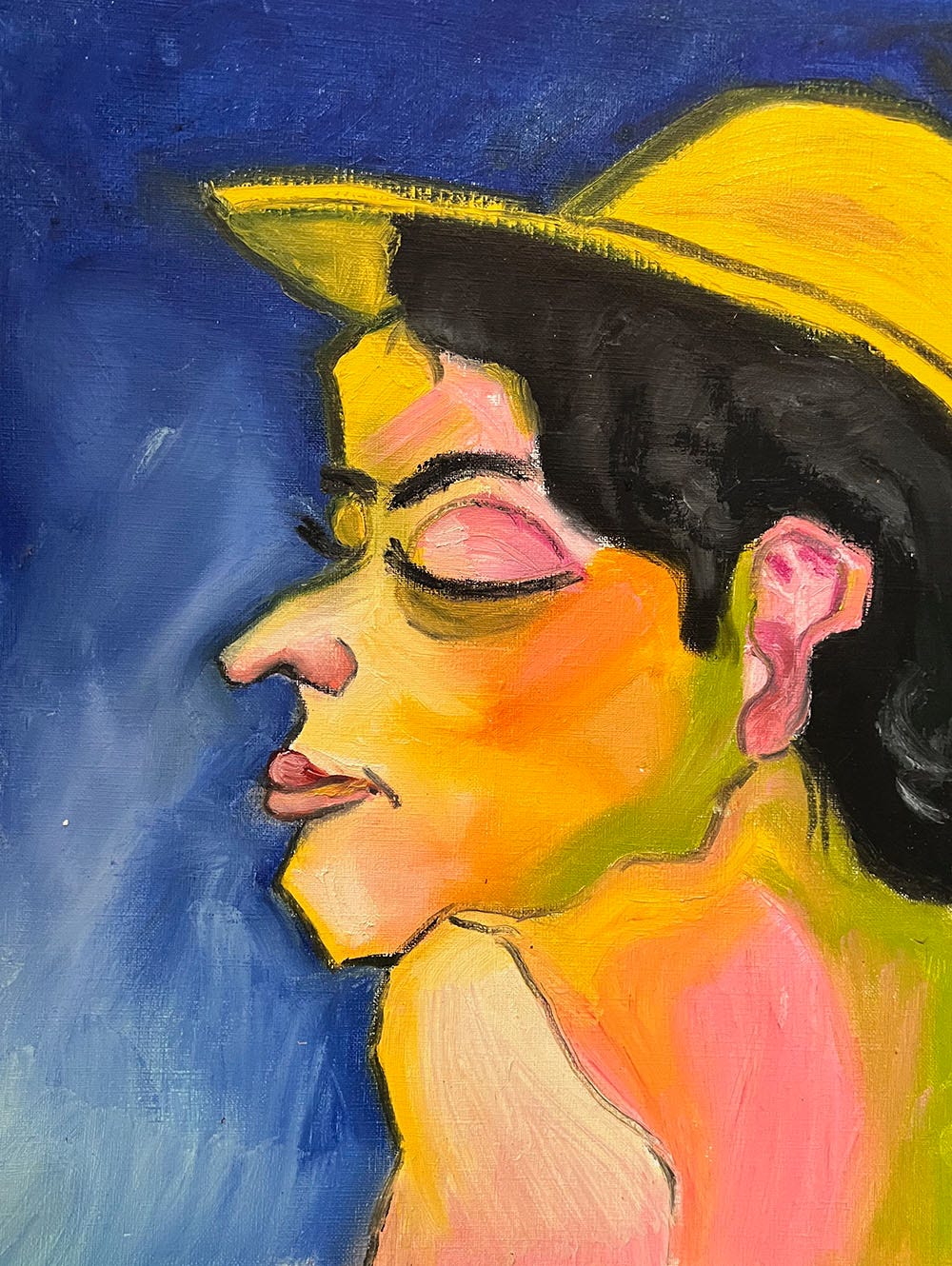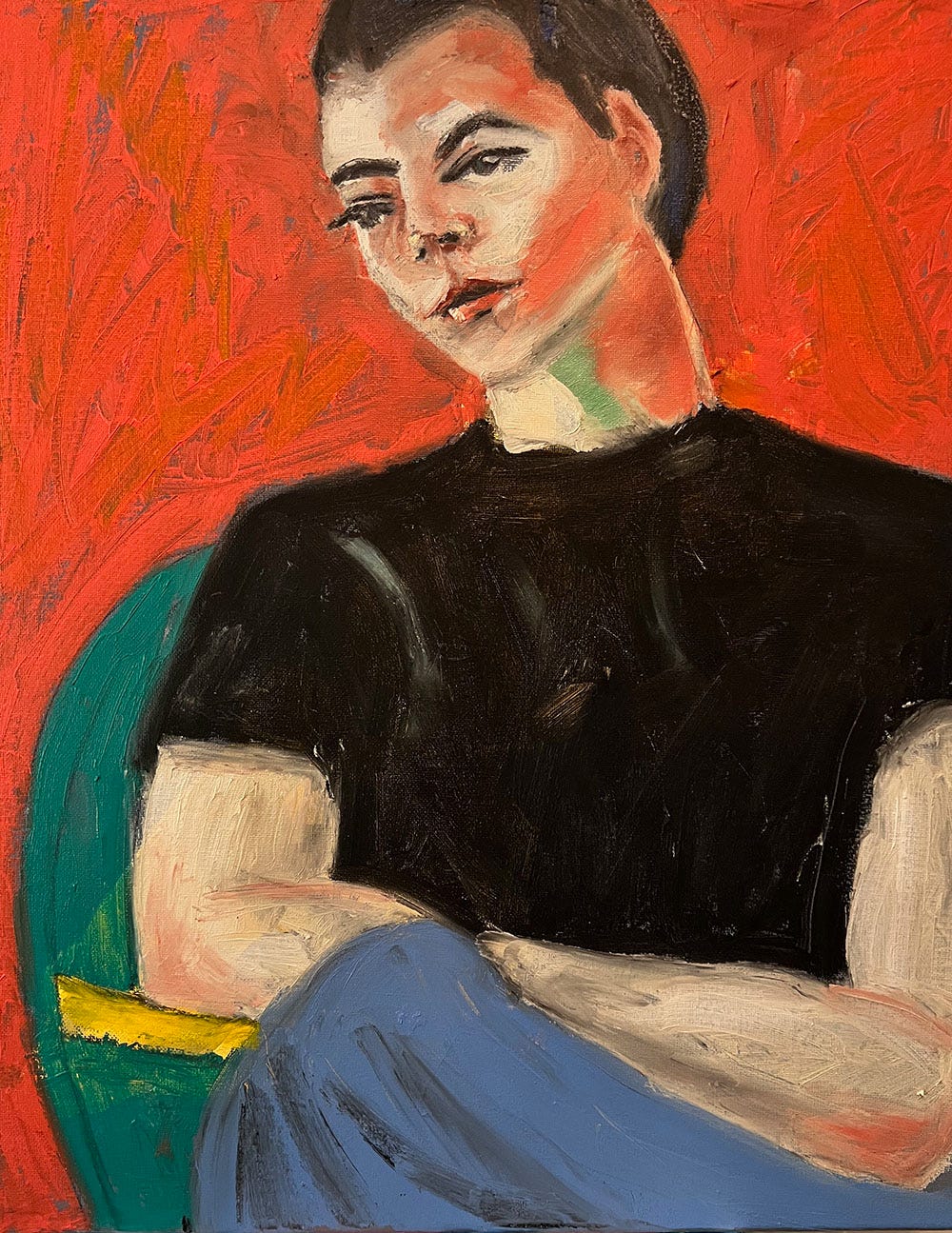I first came to know Hamilton from their exquisite writing. Vulnerable, fierce, sly, gentle, piercing, painful, uplifting—their staggering depictions of nature and animals and sex and bodies and illness and human relationships blew open my heart. Their work has appeared in The New York Times, The Sun, and The Rumpus, among others. They’ve also published ten books of creative nonfiction, memoir, fiction and poetry; their memoir No More Hurt was one of the UK Guardian’s Best Books of the Year and a Sunday Times bestseller.
I’ve since fallen in love with their equally exquisite paintings. They manage to capture the same complex array of emotions. Their use of color, their playfulness, their willingness to lay their subjects bare—both physically and emotionally, their courage to see the world as it truly is and bear witness, their delight in experimenting with various mediums and styles sometimes drawing inspiration from beloved artists who came before, this and so much more moves me.
Hamilton is autistic, mobility-impaired, queer, and non-binary. They’re an outspoken activist on disability rights and anti-violence work and were a litigant in Canada’s same-sex marriage case in 2000. Follow their work on Instagram, Facebook, or Twitter.
I’ve long dreamt of owning one of Hamilton’s paintings, so sharing this series of paintings of non-binary people brings me great joy.
Typically with visual artists, I include a few words on the artist’s vision, et cetera, but since Hamilton is a writer, they’ve written it themselves.

Because many folks are rarely represented in art, I’ve been working on a series of images of non-binary folks dressed in black or near-black (to unify the group).
The project is of particular note because it was spurred by my (often-farcical) attempts to create via Artificial Intelligence. This is getting to be a common approach for visual artists, a step up/away from our digital paintings. In the AI program Dall-e, for instance, I write what I want to create. For instance:
“Oil painting, non-binary person wearing black pants and black shirt, sitting in yellow chair, blue background.”
I wait and see what it comes up with. I refine and run it again to get closer. It’s a time-waster, fun and often hilarious when a figure comes out with three arms or a hand in space or you get a non-flying bird with no branch to sit on.
That’s where I’d love to be a Surrealist rather than what I am!
As for style and mediums, I’m using no brushes, which means I’m doing a lot of (gloved) fingerpainting a la Lavely Millar, and solely utilizing oil sticks, which themselves hesitate to dry, and occasionally actual sticks harvested from outside where a brush would do the job better. I set myself silly challenges to see where they take me. Oil sticks, for those not in the know, are chunky oil paints an inch across or more—there’s no finesse in them remotely. They can be “transformed” into regular oil paints with mediums, and mixed, but I don’t do this. I paint mostly a la prima, that is to say, in one sitting (with second rounds, or small fixes, another time. This accommodates my disabilities). Oil sticks force loose style and bring spontaneous energy.
The paintings are bright, with not a lot of situational detail, which pleases my autism.













Wow these paintings are amazing! Thanks for introducing us to them Jane!
Through your beautiful substack, Beyond, I am being introduced to so many good things. Thank you.
Today it is this writer, this extraordinary human.
THIS PAINTER!! I find these images sparkling with directness and vulnerability.
I understand why you must be coveting a particular painting of theirs. I hope you will get to have it on your wall one day.